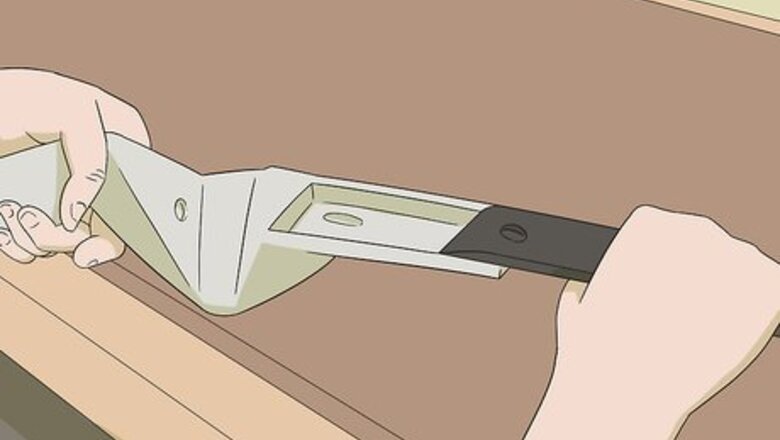
views
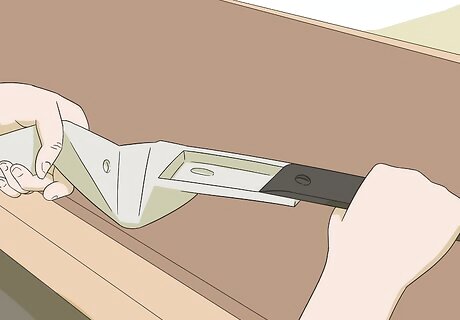
Make sure your bow is set up properly and has the correct draw weight. This is important for accuracy to make sure your bow is functioning the best it can and you can pull the bow back properly.
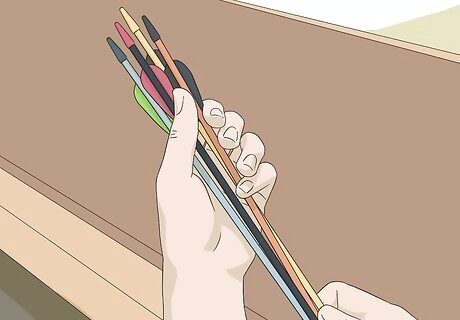
Have the correct arrows. You should spend a considerable amount on your arrows. After all, they are the one hitting the target. Consider the arrows' spine, material, length, and many other factors when buying them. If you have carbon arrows, you'll need to flex them after a shooting session to know if they've been damaged.
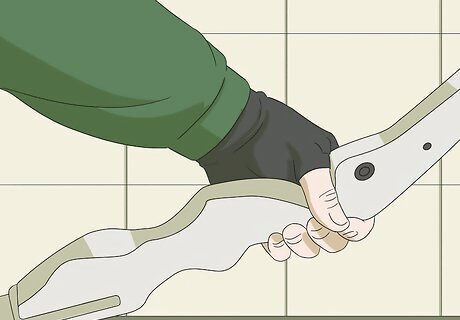
Grasp the bow gently around the handle. Don't squeeze the life out of it. Hold the bow in the pad of your hand between your thumb and index finger. The knuckles on your hand should be at an approximately 45-degree angle.
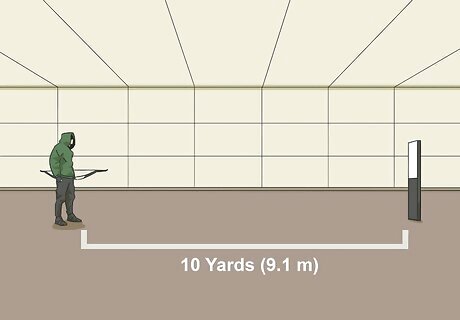
Face the target. When you're starting, shoot from no more than 10 yards (9.1 m) away. Otherwise, you will lose arrows and fail to improve since any good shot will be purely by chance. Once you can shoot an end (6 arrows) in a dinner plate sized grouping, move back by 5–10 yards (4.6–9.1 m).
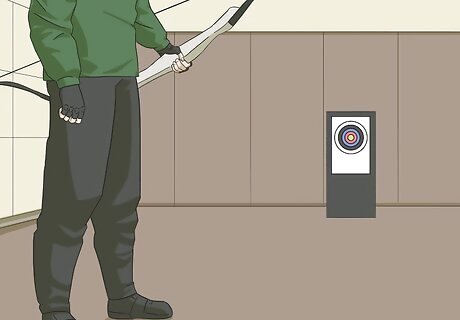
Stand with your feet facing perpendicular to the target. Turn your head to look at the target. You can stand with a square stance (feet straight) or an open stance (foot nearest the target is pointing towards it). An open stance is more difficult to create consistently, but may feel more comfortable. If there is a shooting line, stand with one foot on either side.
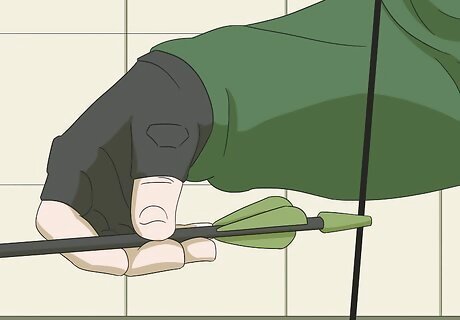
Nock your arrow. One of the fletchings (called the index vane) will be a different color than the others. This will point between the arm holding your bow and the riser. Put the arrow below your nocking point or if you have two, in between them.
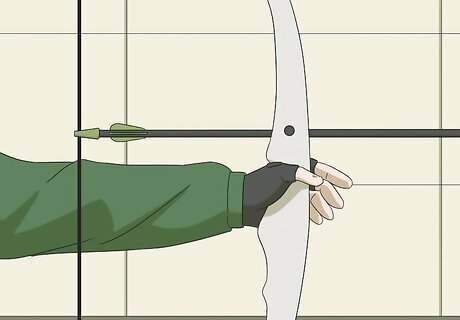
Raise the bow. Don't draw back the string as you do so. Bring it up until your arm is at shoulder height, but keep your shoulder down. Be careful that your grip and stance don't change while you do this and the next steps. You can turn your elbow inwards to prevent string slap.
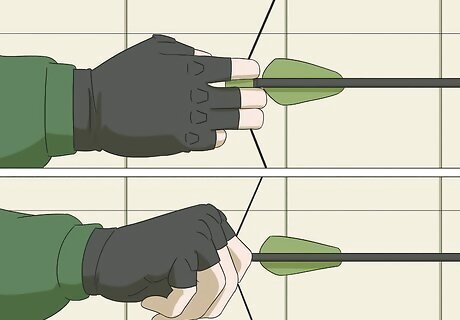
Grip the string with your preferred grasp. You can use a Mediterranean draw (index finger above, middle and ring below) or three fingers under (index, middle, and ring all beneath the nock).
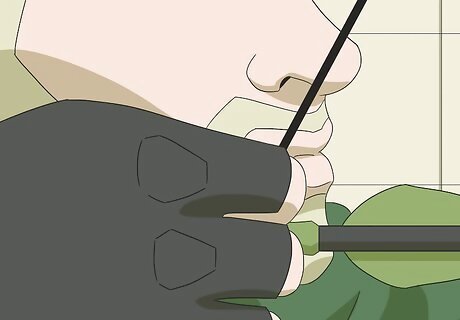
Draw the string to the corner of your mouth. This is called an anchor point and while archers with a sight draw to their jaw, you should touch your index/middle finger to the corner of your mouth. This brings the arrow closer to your eye and allows you to aim with greater accuracy. Keep your head straight; don't move it to reach the string, bring the string to your face). Avoid chewing gum as this may change your anchor point slightly. Don't be afraid of the string, a common mistake. It will not harm you in any way, so there's no need to be cautious with pressing it against your face. Keep the elbow of your string hand parallel to the ground. Don't let it drop in a "chicken wing."
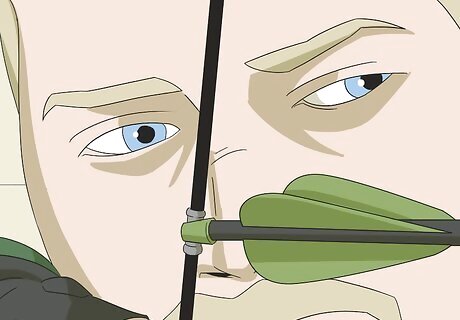
Take aim. You'll do this in different ways, such as string-walking, gap-shooting, or instinctive where you don't consciously aim at all. These are usually based on trial and error - if your first shot goes too far up, aim lower next time. Figure out your dominant eye. You may want to close your other eye while aiming.
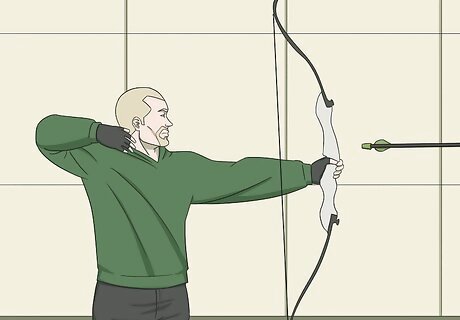
Release the arrow. Do this by relaxing your draw hand and allowing the string to slip out. Don't pluck the string as it leaves your hand and follow through to your ear (so you don't have what's called a static release).
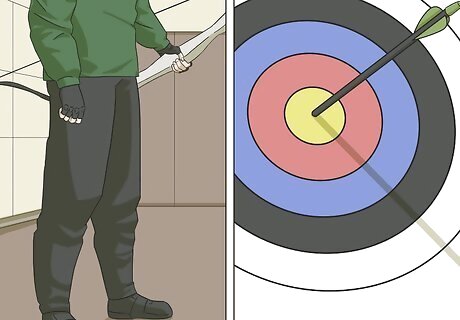
Stay still until your arrow reaches your target. If you practice Olympic recurve, you will let the bow fall forward naturally and be held in place by your finger/wrist sling. Don't shuffle your feet as you nock your next arrow.













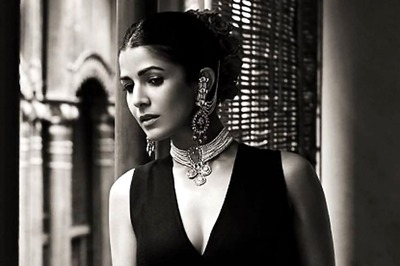



Comments
0 comment